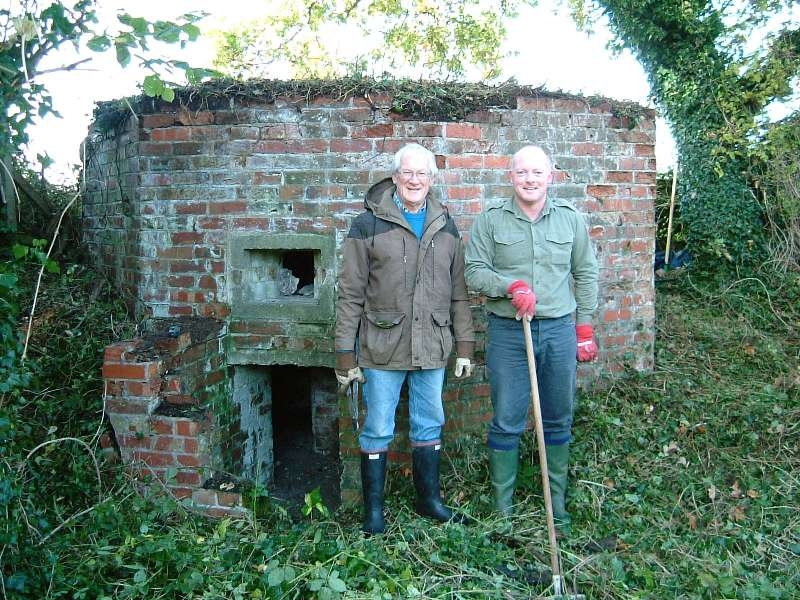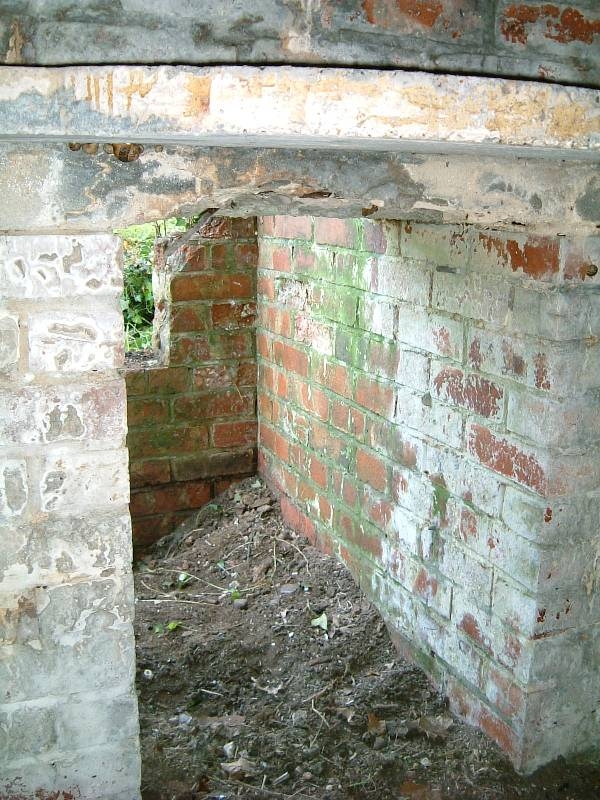A Hampshire 8 Sided Pillbox re-discovered. PILLBOX: S0011186 (Extant)



A forgotten and unusual pillbox re-appeared again late October 2008 when myself, Tim Burt and Philip Riley met to carry out a project uncovering a part of Odiham’s hidden wartime history. During 1940 there was a possibility of airborne troop and glider attacks on RAF airfields in the south of England. Pillboxes were hurriedly constructed both within the airfield perimeter as well as the surrounding area to counter this threat. During an attack the defences were to be manned either by personnel from the RAF base or local home guard until regular troops arrived.



This example was one of a group of eight pillboxes built west of the wartime RAF base. As well as protecting the airfield these defences were a part of the Southern Command Stop line that ran from Hook to Salisbury. Despite the box being heavily overgrown and almost invisible, I did managed get inside a couple of weeks previously to find it was almost identical to the 8 sided one sitting at Hancock’s Farm at nearby Crookham.



On a cold Tuesday morning we began our work and some unusual details came to light almost immediately we began removing the mass of undergrowth covering the box. Among the finds were several long and thick wires still attached to many of the metal hooks in the walls and along the roof edge. These were here to attach camouflage netting or similar concealment material to hide the pillbox from aerial view. The top of the defence also appeared to have a thick layer of galvanised wire mesh covering the whole of the roof top holding vegetation for camouflage purposes. A rare discovery of what seems like green camouflage paint was found on the south west side of the box, this looks possibly to have been added in a disruptive pattern. A small low external brick “L” shaped wall protected the low crouch down entrance.



The wall provided a degree of protection for the occupants of the box from flying bullets or shrapnel. Inside the structure it is dry and on the whole original with a small amount of post war graffiti. A central square brick supporting wall acted as an anti-ricochet barrier affording limited protection from any bullets entering the pillbox. The floor appeared to be made of a very weak mix of cement which crumbled easily when cleaning the interior out. Despite being 8 sided the pillbox has only four loopholes, each wall has a loophole casting but every other embrasure is neatly filled with brickwork. A couple of the loopholes still have remaining asbestos flameproof flaps attached to them. One of the exterior walls has its brick shuttering falling away to expose the concrete infill and re-enforcing rods.



During the time we worked on the box several dog walkers stopped by for a chat. One chap said he had even forgotten it existed having last seen it some 20 or more years ago, even then it was mostly overgrown! Since the project was completed I have discovered three more identical 8 sided pillboxes, all un-listed by the Defence of Britain volunteers during the late 1990s national project to find and record the remaining wartime defensive structures.
By Tim Denton




